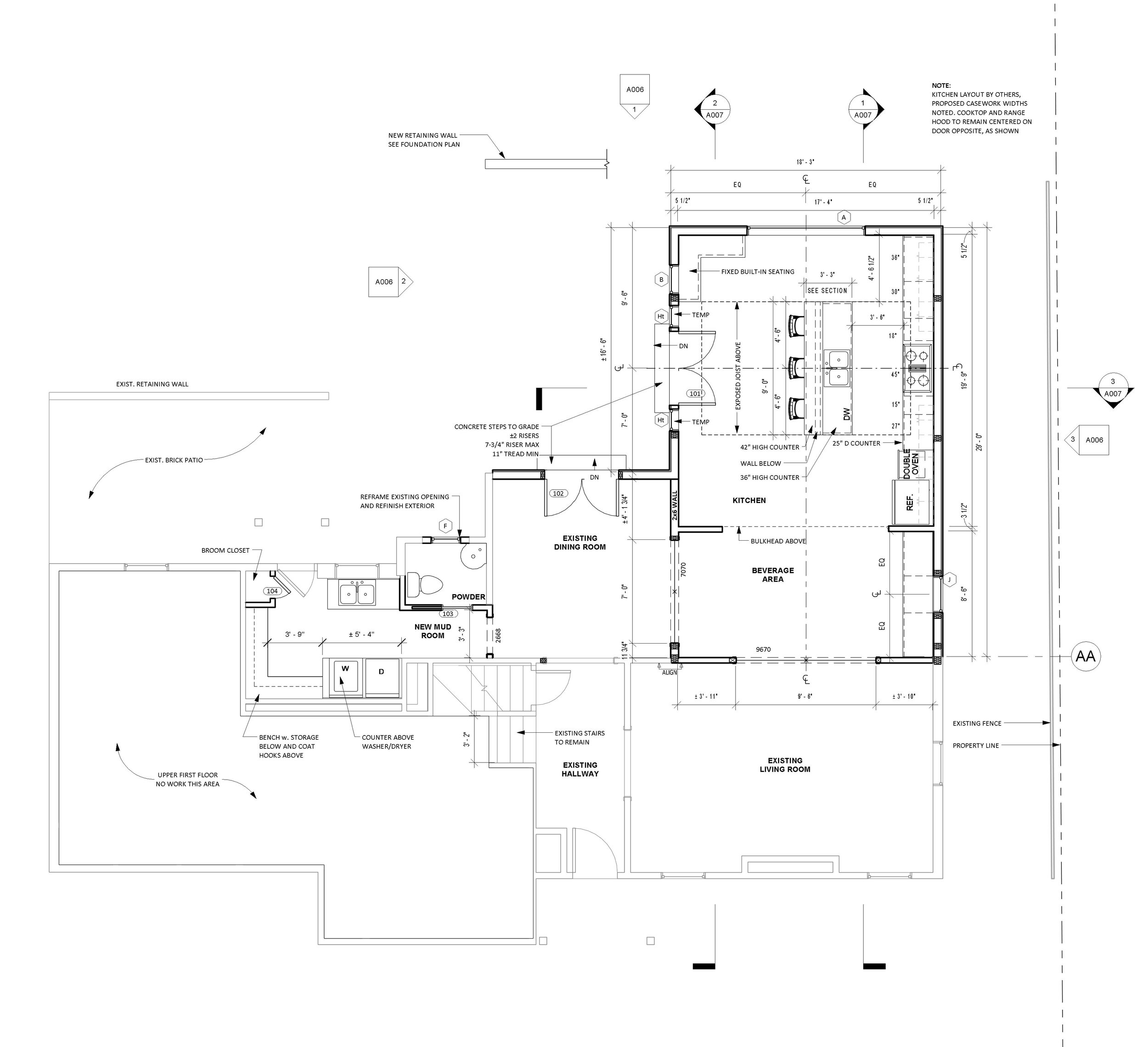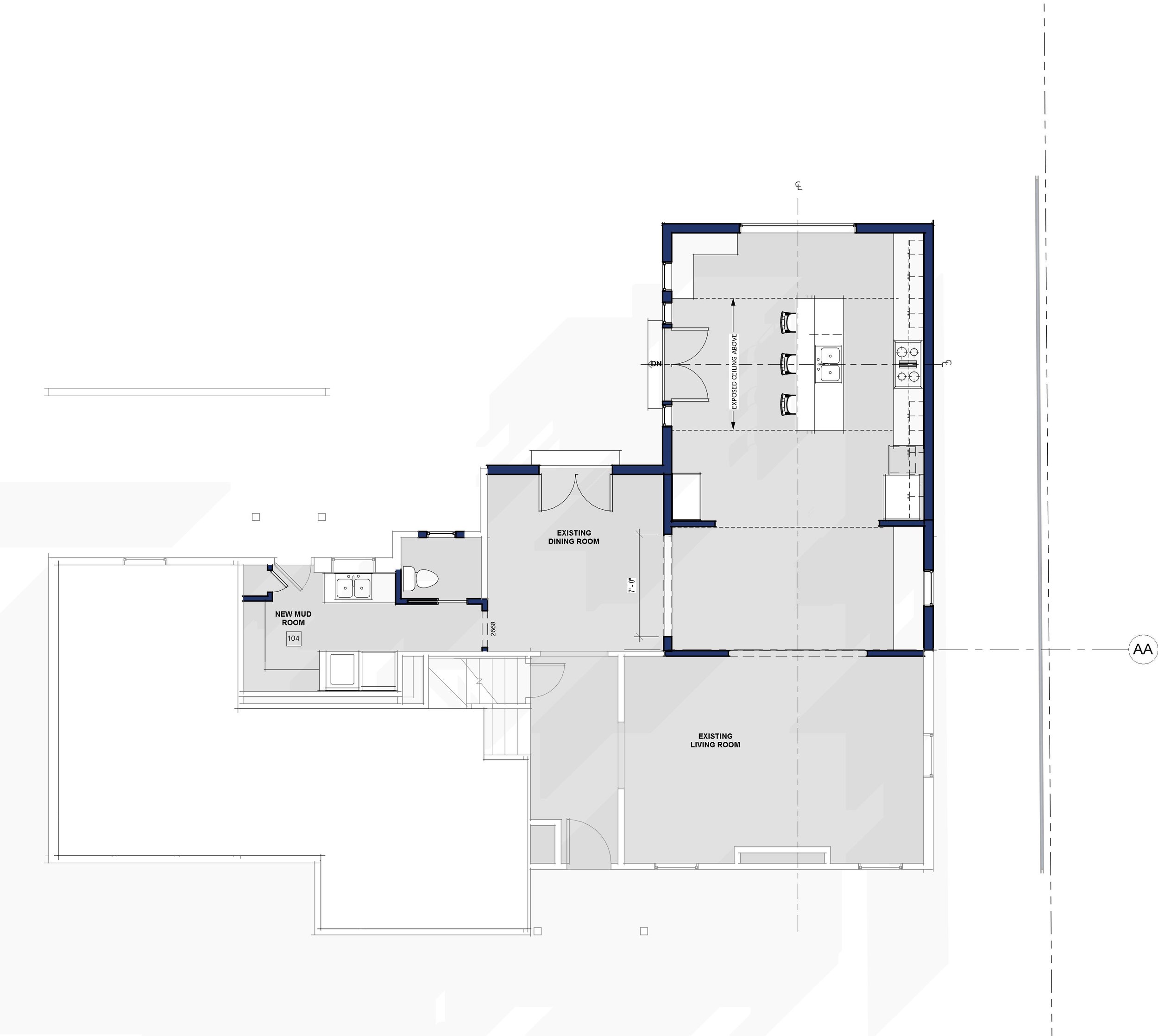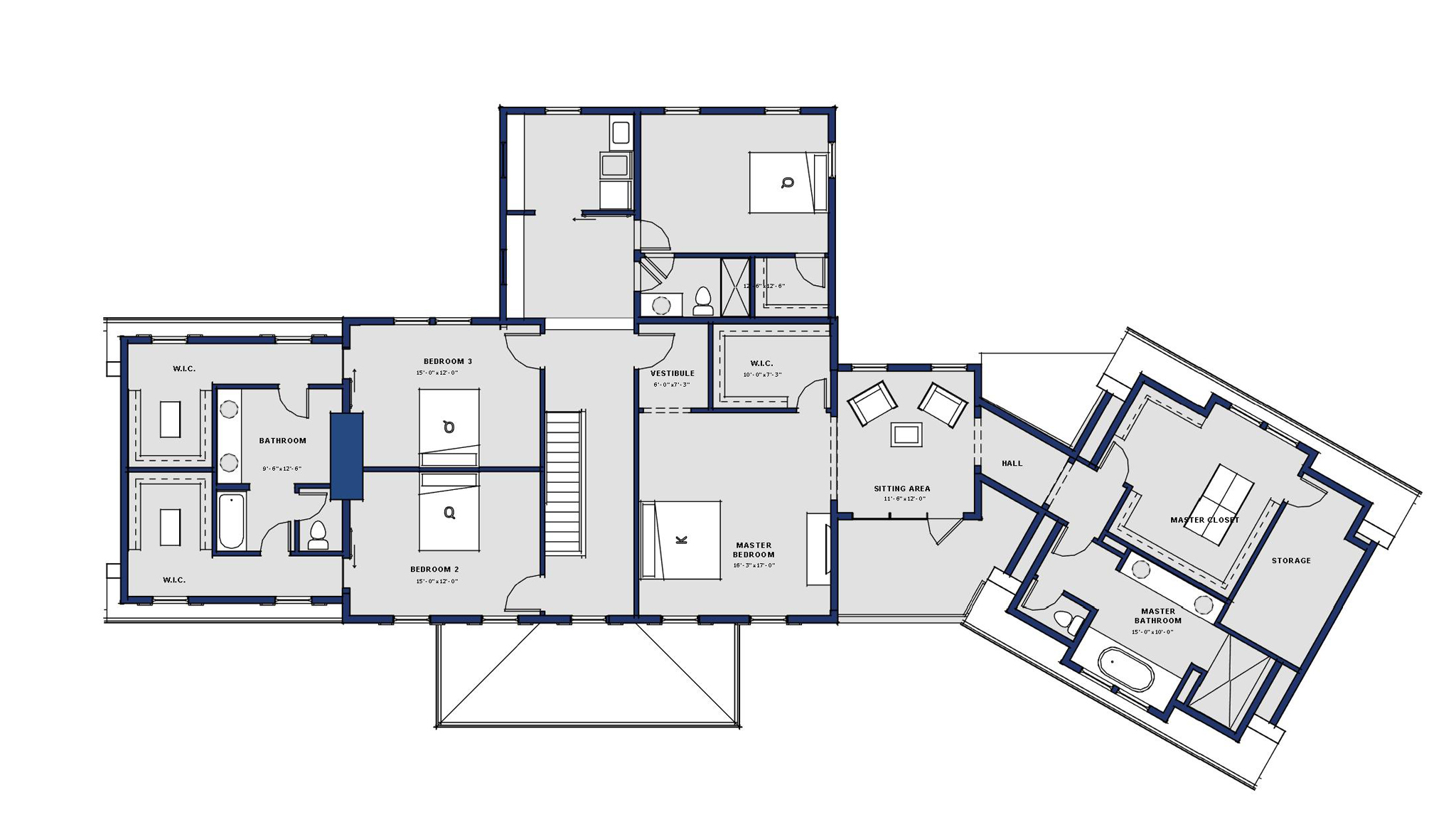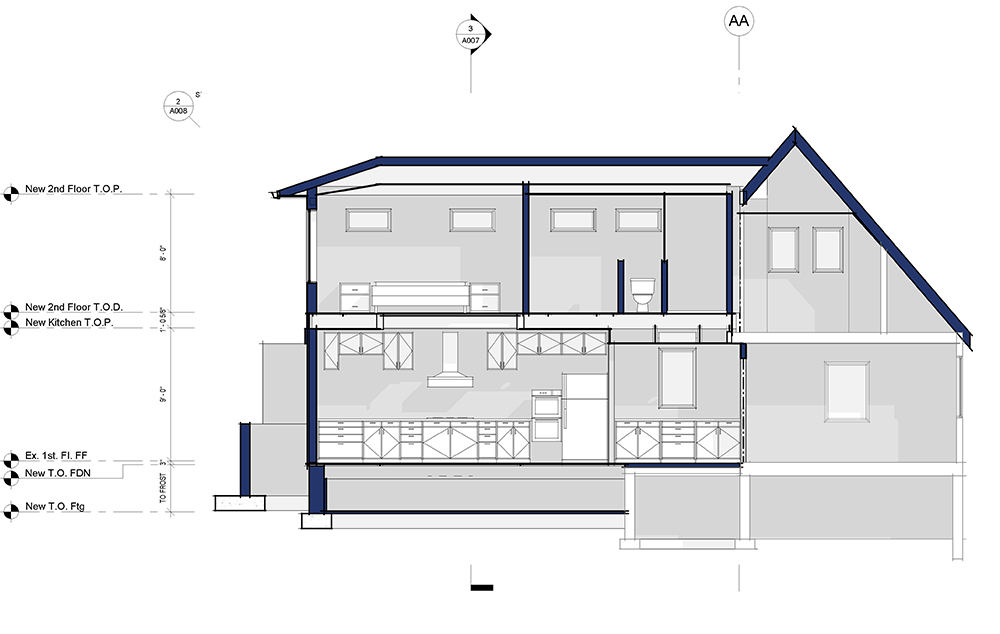A new master bedroom suite is a common requirement for homeowners looking to build an addition to their homes. We discussed a few general concepts in our previous blog post about the proper size for a master bedroom.
We recently visited a completed project with a bedroom like one shown below. This design gave the client a comfortable 15’-6” x 12’ bedroom space with a long, open walk-in closet behind the bed. This is one of our favorite closet designs because the open bed wall makes the room feel bigger and allows more light into the room. We don’t have to close off an entire section of the bedroom to house the closet.
Master bedroom floor plan
This first image shows the floor plan with dimensions and some simple notes. You can see the dimensions at the top and the side of the room showing the overall width of the structure, the location of the windows, the thickness of the walls and the interior dimensions between the walls. There are also some dimensions shown inside the bedroom that give a better approximation of the length of the bed wall and the openings at each side.
3D view from our design software. This is an actual representation of the current floor plan.
The 3D image is taken directly from our design software, so we (and our clients!) can always access a 3d view to confirm the floor plans are going to create the space we are expecting.
And here’s the final built product! This project was a new construction home but the principles would be the same for any home renovation.





